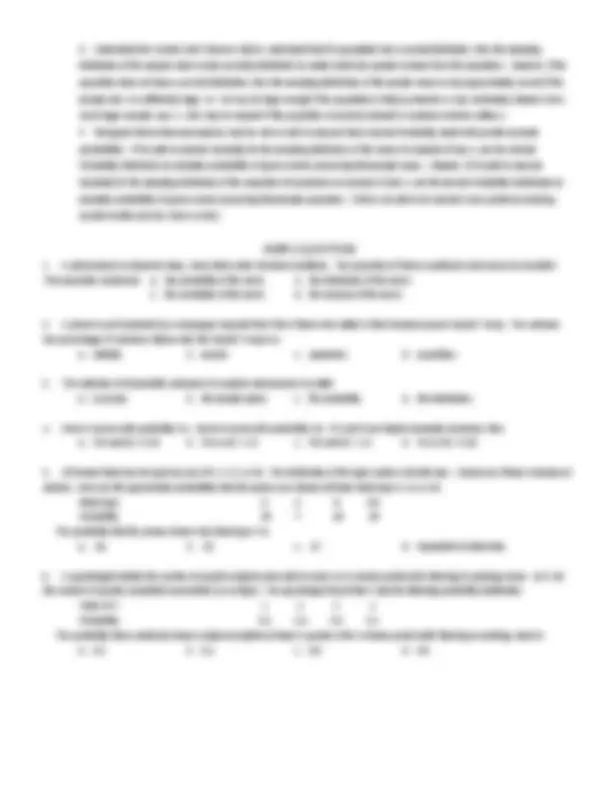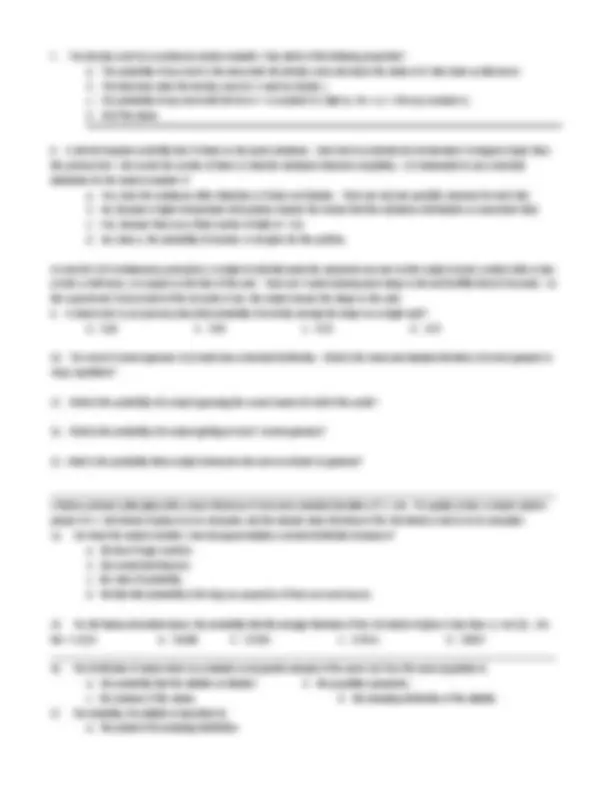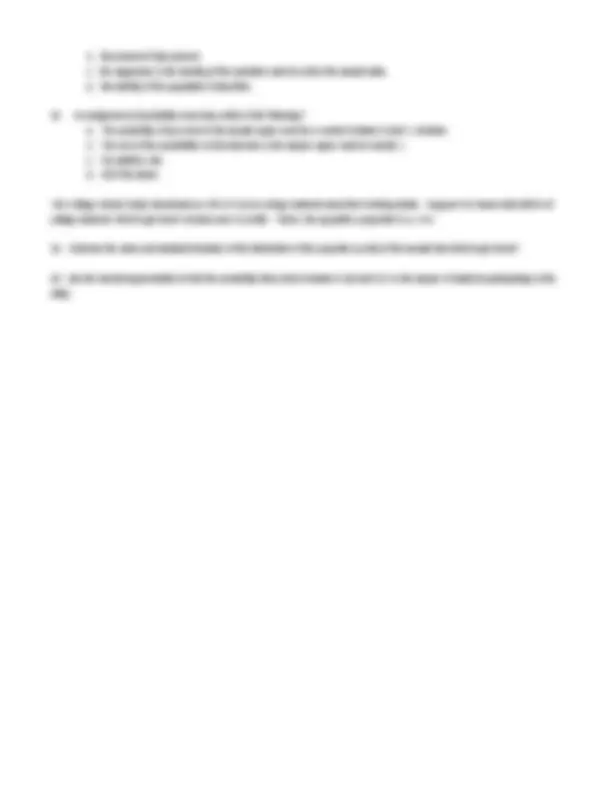





Study with the several resources on Docsity

Earn points by helping other students or get them with a premium plan


Prepare for your exams
Study with the several resources on Docsity

Earn points to download
Earn points by helping other students or get them with a premium plan
Community
Ask the community for help and clear up your study doubts
Discover the best universities in your country according to Docsity users
Free resources
Download our free guides on studying techniques, anxiety management strategies, and thesis advice from Docsity tutors
The learning objectives for week 12 of the math-1530 probability and statistics course during the fall 2004 semester. Topics covered include probability, random variables, and sampling distributions.
Typology: Assignments
1 / 5

This page cannot be seen from the preview
Don't miss anything!




LEARNING OBJECTIVES (CH 9, 12, & 10, in that order) I. Probability (See Ch. 9 in BPS) A. Recognize that some phenomena are random and understand the idea of probability as long-term relative frequency. B. Understand the meaning of the following terms: outcome, sample space, event, probability model (or distribution), at least, and at most. C. Understand the following notation: For some event A, P(A) means “the probability of A” and P(x = 4) means “the probability that x equals four.”
E. Identify a sample space for simple random phenomena. (Examples: Know how to enumerate the sample space for given coin, dice, and card exercises.) F. Decide whether assignments of probabilities to individual outcomes do or do not satisfy the basic rules of probability , and understand that assignments that do not satisfy these rules cannot be legitimate. G. Calculate the probability of an event, from an assignment of probabilities to individual outcomes (i.e., a discrete probability distribution) by adding the probabilities of the outcomes that make up the given event. H. Use the addition rule to find the probability that one or the other of two disjoint events occur. I. Use the complement rule to find the probability that an event does not occur. II. Random Variables A. Recognize when it is reasonable to assume that events are independent. B. Recognize that a probability distribution of a random variable X tells us what the possible values of X are and how probabilities are assigned to those values. C. Understand how the distribution of a discrete random variable assigns probabilities to individual outcomes that make up the sample space. D. Understand how the distribution of a continuous random variable assigns probabilities as areas under a density curve. III. The Binomial Setting (See Ch. 12 in BPS) A. Understand that a binomial distribution is a distribution of COUNTS and that binomial distributions comprise a special class of discrete probability models. B. Recognize when a binomial distribution is appropriate (i.e., when a problem fits the four conditions of the Binomial Setting) and be able to identify n (# of trials or observations) and p (probability of success on each trial). C. Find binomial probabilities for specified numbers of successes using the binomial table. D. Use n and p to calculate the mean (or expected ) number of successes and the standard deviation in the number of successes for a binomial distribution. IV. Sampling Distributions A. Understand the meanings of, and recognize the differences between the following terms: Sample, Statistic, Population, and Parameter B. Recognize that the sampling distribution of a statistic (such as the sample mean x-bar or the sample proportion p-hat) is the distribution of values taken by some statistic calculated for all possible samples of the same size (n) from the same population. C. The S ampling Distribution of the Sample Sean (See Ch. 10 in BPS): Recognize that if x-bar is the mean of an SRS of size n from a large population with mean mu and standard deviation sigma, then the mean (center) of the sampling distribution of x-bar is also mu, but its standard deviation (spread) is sigma divided by the square root of the sample size. D. The sampling distribution of the sample proportion (see pp. 470 – 473 in BPS): Recognize that if p-hat is the proportion of
successes in an SRS of size n from a large population with population proportion of successes p, then the mean (center) of the sampling distribution of p-hat is p and the standard deviation (spread) is the square root of (p (1 – p) / n).
A factory produces plate glass with a mean thickness of 4mm and a standard deviation of 1.1 mm. For quality control, a simple random sample of n = 100 sheets of glass is to be measured, and the sample mean thickness of the 100 sheets (x-bar) is to be computed.
b. the amount of bias present. c. the vagueness in the wording of the questions used to collect the sample data. d. the stability of the population it describes.